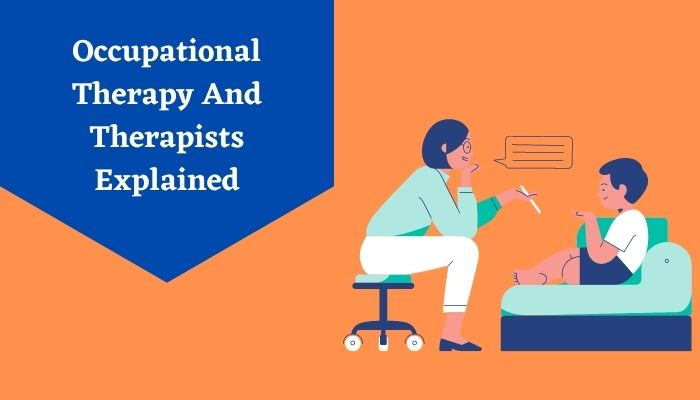These days, western medicine and therapy treatments have taken a giant leap forward to accommodate the needs of those who suffer from movement disabilities and problems. These issues can hinder the capability of performing daily tasks, which messes with the person’s mental and physical well-being.
Occupational therapy treatment is a form of treatment that involves speaking to an occupational therapist who devises suitable exercises and methods of handling your everyday life with ease.
Occupational therapy treatments can help people of all ages ease the process of dealing with daily chores more comfortably by simply finding situational easement for major problems.
Occupational Therapy Evaluation
To successfully conduct an occupational therapy evaluation, the therapist will start by observing how the patient conducts themselves in their daily lives. They will evaluate the concerns, i.e., issues with movements and difficulties with certain daily activities.During the first occupational therapy treatment session, the therapist will take the time to learn your concerns. You can express these difficulties verbally or the therapist will simply observe you while you are asked to complete a series of useful daily tasks.
Once they are familiar with the issues that hinder your work, be it daily chores around the house, your working capacity as an adult, your professional needs, or the needs of children to complete their schoolwork, the therapist will begin defining an occupational therapy treatment that targets the condition if the need arises, the therapist will also accommodate occupational and physical therapy to address your concerns.
The occupational therapy treatment or the occupational and physical therapy solutions will require your input as well. Along with fixing the issues that you are facing while doing your daily chores, the treatment plan will also address discomfort while extending tasks. The therapist will take your concerns, input, and suggestions into account when developing a plan for your treatment.
Occupational Therapy Treatment
The steps involved in occupational therapy treatment are extensively designed to target your concerns and rectify the problem from the roots.Here are a few possible aspects of the occupational therapy treatment that the therapist may prescribe, monitor, and assist to ease your discomfort and aid in finishing your daily tasks with gradual programming of the muscles:
- Developing and learning new and improved ways to button your shirts, use the zippers, tie your shoelaces, etc.
- Practice improved methods of getting in and out of showers or baths that may affect movement due to traction.
- Find alternative means to using your computer to type, learn, etc. including innovative shortcuts that facilitate accessibility caused by movement-related issues.
- Learning new ways for older adults to prevent or break falls when they are at home or in public spaces.
- Learning to use prescription alternatives to complete various tasks such as using wheelchairs, especially on elevations, toilet seats, cushioned seating arrangements, and others.
- Learning to organize the necessities such as medications, tools, appendages, etc. such that they are easier to access and use at critical times. These organizational occupational therapy treatments take into account the factor of easing the patient’s life such that they take their daily doses of medicines and don’t shy away from doing household chores or professional tasks simply because they are too difficult to accomplish.
- Treating victims of stroke or partial paralysis to adapt to their new lifestyle. These occupational therapy treatments are much more extensive and require combinations of occupational and physical therapy in some cases. They target the person’s inability to move certain muscles to still complete daily chores. In such cases, the therapist takes the time to help the patient adapt to muscle movement with exercises and targeted neuro massages before devising a course of occupational therapy treatment.
- Treating behavioural aspects in kids who tend to become defensive and indulge in physical violence.
For people who suffer from birth defects or disorders, especially things like ADHD, autism, etc., occupational therapy treatment is often coupled with medication to subdue the effects of the health issues.
Occupational And Physical Therapy
For the most part, people with birth defects and acquired disorders can benefit from occupational therapy treatment to a large extent. However, in certain scenarios, when the occupational therapy evaluation demonstrates a need to address the person’s physical ability to perform tasks, a combination treatment is more beneficial.Physical therapy addresses the person’s concern with physical activity, posture, levels of comfort, etc. while occupational therapy is designed to ease the process. Here are a few means that address the issues with occupational and physical therapy:
- Practicing grasping small items and moving them gradually.
- Holding pencil or computer mouse and rewiring the motor skills to facilitate movement to complete important tasks.
- Developing hand-eye coordination to take targets or play movement-based games such as tennis, badminton, etc.
- Neuro massages and physical therapy relax the muscles and allow easy movements.
- Address sleep disorientation, restless leg, and other disorders that prevent the body from receiving sufficient rest.
Children, on the other hand, who develop birth defects ad disorders find themselves in awkward positions, which makes them feel out of place. Occupational therapy treatment can help such people lead more normal lives.
The intent of occupational and physical therapy is to ease the patient into their new life or help them adapt. Thus, they feel left out less often and consider themselves more in control over their daily lives. Thus, if you suffer from a disorder or know someone who does, it is best to seek occupational therapy treatments and address the issues at the earliest.


